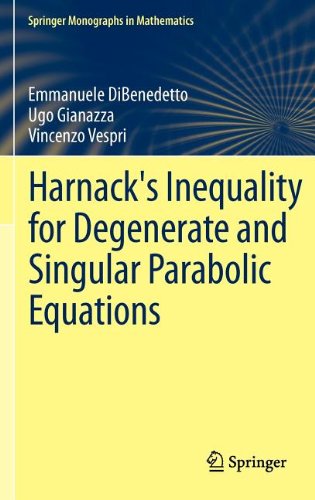

Most ebook files are in PDF format, so you can easily read them using various software such as Foxit Reader or directly on the Google Chrome browser.
Some ebook files are released by publishers in other formats such as .awz, .mobi, .epub, .fb2, etc. You may need to install specific software to read these formats on mobile/PC, such as Calibre.
Please read the tutorial at this link: https://ebookbell.com/faq
We offer FREE conversion to the popular formats you request; however, this may take some time. Therefore, right after payment, please email us, and we will try to provide the service as quickly as possible.
For some exceptional file formats or broken links (if any), please refrain from opening any disputes. Instead, email us first, and we will try to assist within a maximum of 6 hours.
EbookBell Team

0.0
0 reviewsDegenerate and singular parabolic equations have been the subject of extensive research for the last 25 years. Despite important achievements, the issue of the Harnack inequality for non-negative solutions to these equations, both of p-Laplacian and porous medium type, while raised by several authors, has remained basically open. Recently considerable progress has been made on this issue, to the point that, except for the singular sub-critical range, both for the p-laplacian and the porous medium equations, the theory is reasonably complete.
It seemed therefore timely to trace a comprehensive overview, that would highlight the main issues and also the problems that still remain open. The authors give a comprehensive treatment of the Harnack inequality for non-negative solutions to p-laplace and porous medium type equations, both in the degenerate (p>2 or m>1) and in the singular range (1<p<2 or 0<m<1), starting from the notion of solution and building all the necessary technical tools.
The book is self-contained. Building on a similar monograph by the first author, the authors of the present book focus entirely on the Harnack estimates and on their applications: indeed a number of known regularity results are given a new proof, based on the Harnack inequality. It is addressed to all professionals active in the field, and also to advanced graduate students, interested in understanding the main issues of this fascinating research field.